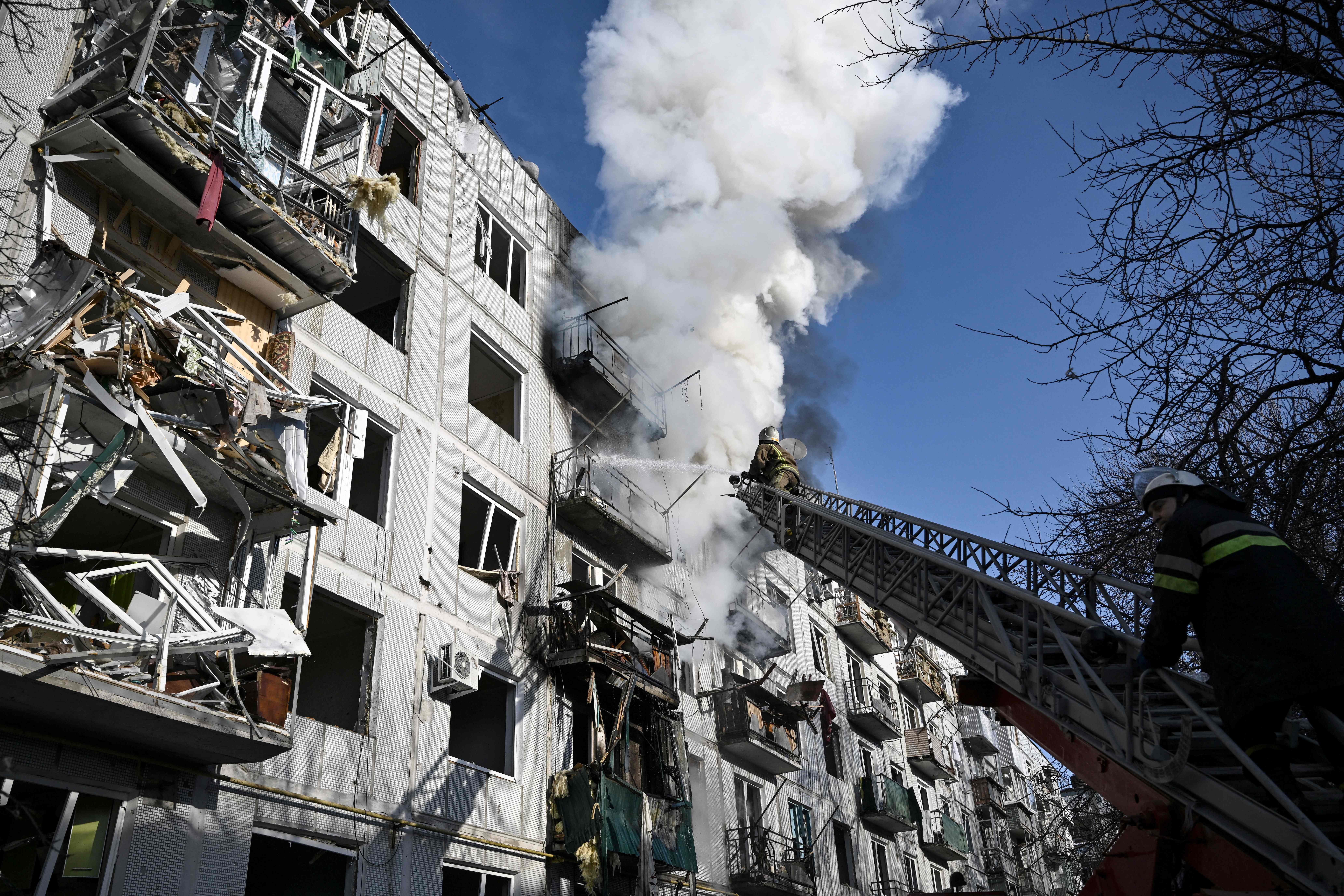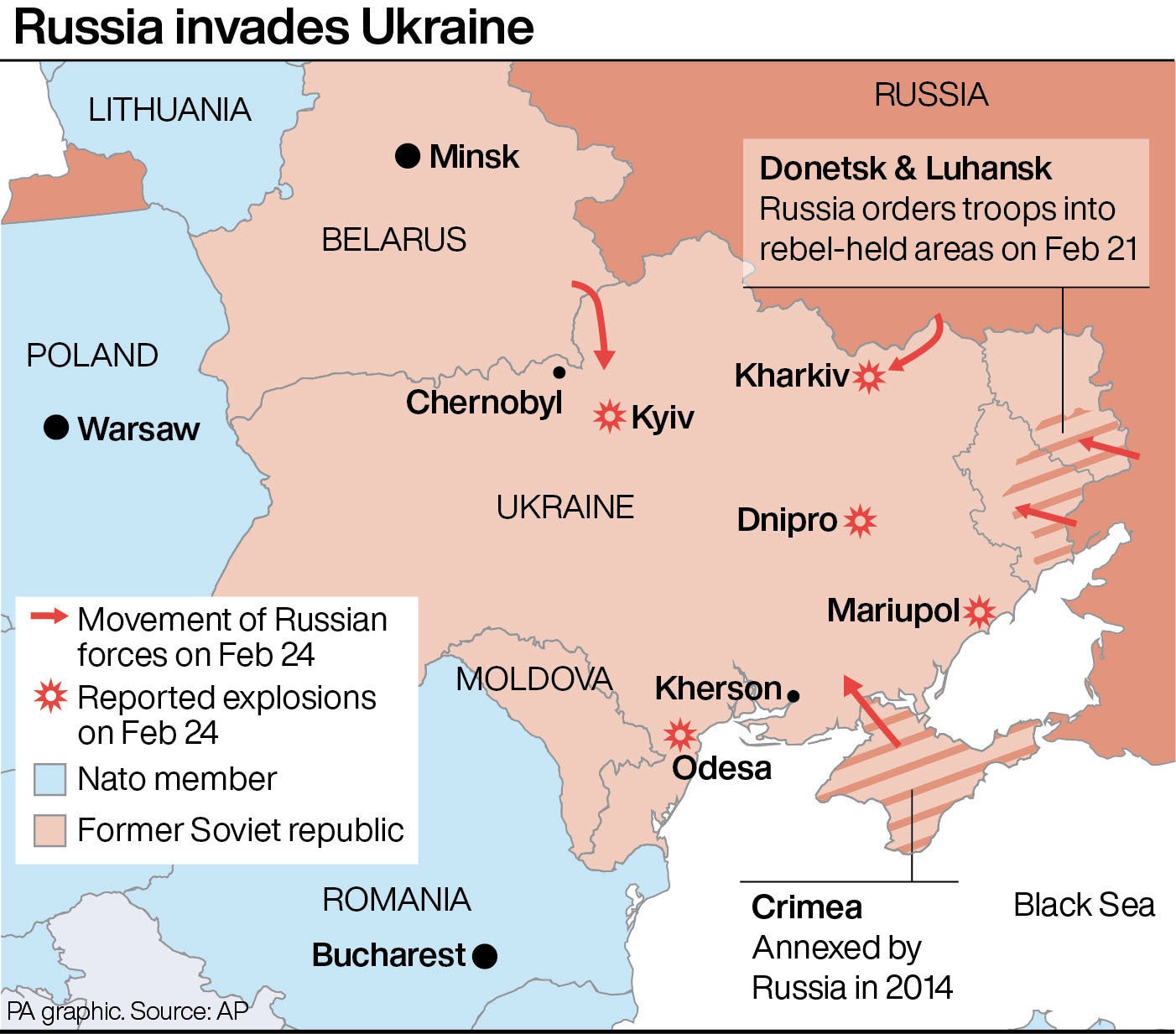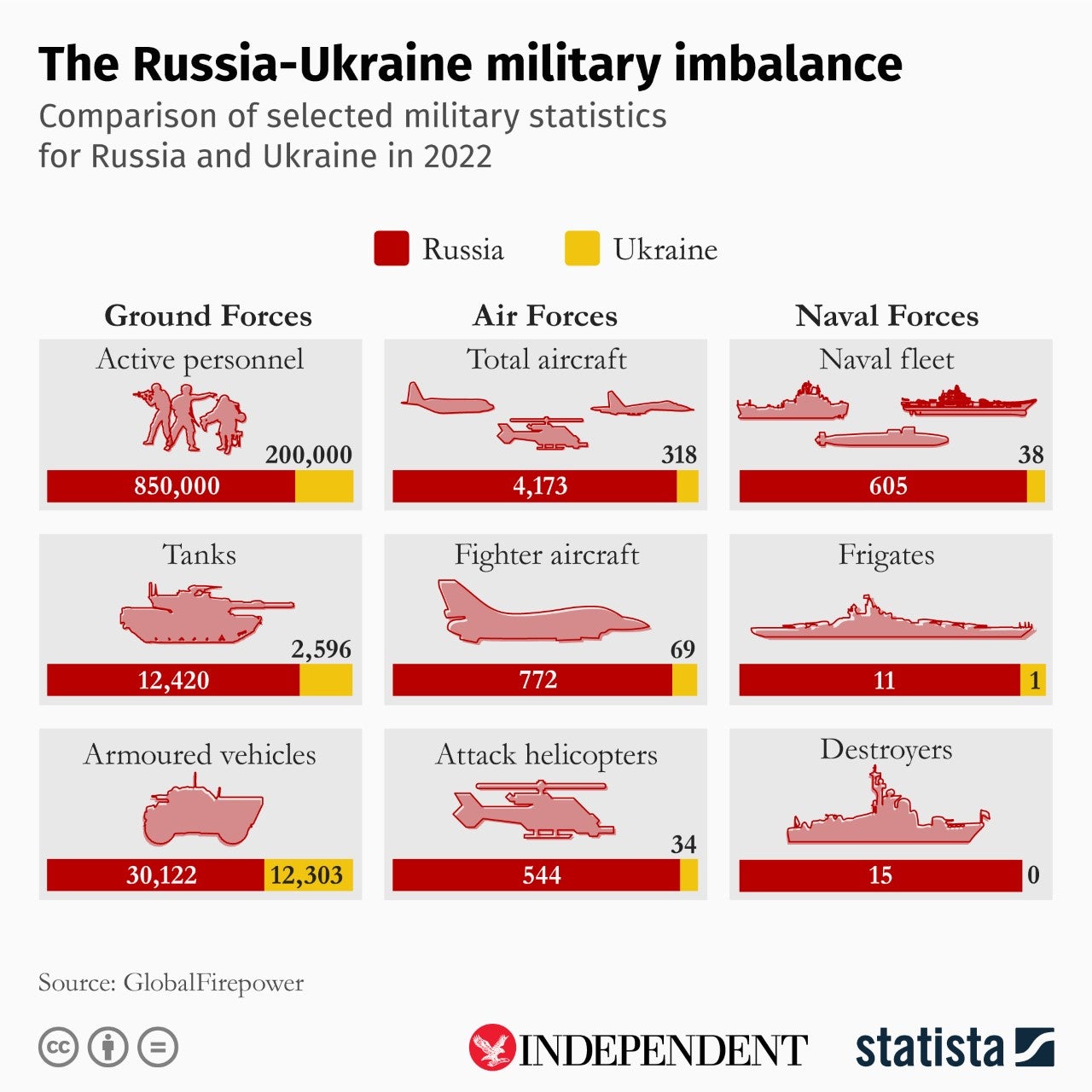Ukraine death toll hits 137 with 316 wounded as Russian assault intensifies
More than 100 people have died less than one day into Putin’s assault
Ukraine’s president said on Thursday night that 137 people had been killed, and 316 wounded so far, after Russia launched a full scale invasion on his country by land, sea and air.
The current death toll includes both Ukrainian soldiers and civilians, according to Volodymyr Zelensky.
As night fell for the first time since Vladimir Putin initiated the all-out assault, heavy exchanges of fire were taking place the regions of Sumy and Kharkiv in the northeast, and Kherson and Odessa in the south, while Kiev said heavy Russian shelling was still underway in the eastern Donetsk region.
Moscow’s defence ministry said ground forces had moved in from annexed Crimea, and claimed to have “neutralised” Ukraine’s air defences and destroyed 11 airfields, with Russian troops also seizing an airbase just 25 miles from the capital’s centre. Ukraine’s airforce is thought to have comprised of roughly 200 aircraft.
Russian forces have also reportedly attempted to take control of Ukraine’s Serpent Island, which lies in the Black Sea less than 30 miles from Nato member Romania, while seizing control of the infamous Chernobyl nuclear power plant – a move the Ukrainian president claimed was “a declaration of war against the whole of Europe”.
Addressing the nation in military uniform, Mr Zelensky suggested the “missile blasts, fighting and the rumble of aircraft” in his country were “the sound of a new iron curtain, which has come down and is closing Russia off from the civilised world”.
“Our national task is to make sure this curtain does not fall across our land,” the president said.
Mr Zelensky moved on Thursday to declare martial law, meaning the military will temporarily take control of Ukraine, and severed all diplomatic ties with Russia. Hours prior to Mr Putin’s invasion, Kiev’s parliament approved a law allowing citizens to bear firearms, while Mr Zelensky called up reservists to the country’s army.
Ukrainian health minister Viktor Lyashko said authorities were repurposing the country’s healthcare facilities to make room for those wounded in the hostilities.
Despite Russia’s claim that “there is no threat to the civilian population”, Moscow’s bombardment was reported to have fatally hit an apartment block near Kharkiv, with some residents in the capital taking to bomb shelters and the city’s subway system.

“Nobody believed that this war would start, and that they would take Kyiv directly” one man waiting out the night in an old Soviet metro station told the Associated Press. “I feel mostly fatigue. None of it feels real.”
Others piled onto trains and into cars and are seeking refuge in neighbouring countries, with steady lines of people laden with backpacks and suitcases forming at border crossings – as aid agencies warned the conflict could trigger a major refugee crisis.
Washington has predicted that up to five million people could be displaced by the conflict, while Poland alone is preparing to receive up to one million refugees.
The Organisation for Security and Cooperation in Europe – the monitoring group tasked with observing former plans for a ceasefire in the Donbas, where Mr Putin moved to recognise the breakaway regions of Luhansk and Donetsk as independent entities this week – announced it was evacuating its hundreds of staff from Ukraine, having operated there since conflict broke out in 2014.
The assault on Ukraine began by air on Thursday morning, after the Russian president’s pre-dawn announcement of a “special military operation” in eastern Ukraine “to defend people who have been victims of abuse and genocide from the Kiev regime”.
Mr Putin insisted he did not want to occupy Ukraine, but said he planned to “de-Nazify” the country and warned Kiev would be responsible for “possible bloodshed” if its military did not lay down its arms.

Shortly afterwards, explosions were heard in the cities of Kharkiv, Kramatorsk, Mariupol and Kiev, while Russian ground troops began to move into Ukrainian territory from Russia, Belarus and Crimea.
Warning the international community not to interfere, Mr Putin said: “If you do you will face consequences greater than any of you have faced in history” – a threat which prompted France’s foreign minister to remind him that Nato is also “a nuclear alliance”.
With Ukraine’s president warning European nations that “if you fail to offer a powerful assistance to Ukraine, tomorrow the war will knock on your door”, western leaders unveiled a range of sanctions aimed at stymying the country’s economy and hitting those close to Mr Putin.
Announcing the UK’s measures in the House of Commons, Boris Johnson labelled Mr Putin “a bloodstained aggressor who believes in imperial conquest” and warned he “will never be able to cleanse the blood of Ukraine from his hands”.
“Diplomatically, politically, economically – and eventually, militarily – this hideous and barbaric venture of Vladimir Putin must end in failure,” the prime minister said in an address to the nation.
Meanwhile, a senior US defence official said it would be a “fool’s errand” to guess at how long the Russian onslaught could last, but suggested it appeared to be only the first phase a large-scale invasion in which Moscow has so far deployed only a limited number of the more than 150,000 troops arrayed around Ukraine.

Without providing evidence, the anonymous official told reporters that Russia’s wish appeared to be to “decapitate” the Ukrainian government, claiming the early Russian push toward Kiev supported Washington’s view that the Kremlin aims to install “their own method of governance”.
While Mr Putin had long insisted that he had no plans for the army he began amassing near Ukraine’s border in November to invade Ukraine, his public rhetoric changed this week with a chilling speech in which he branded Ukraine a “puppet regime” which “has never had traditions of its own statehood”, and claimed Russia was “robbed” by the collapse of the Soviet Union.
The head of MI6, Richard Moore said on Thursday evening that Mr Putin’s attack on Ukraine “was long-planned, unprovoked, cruel aggression”, adding: “No amount of Russian disinformation will now disguise that fact from the international community.”
Additional reporting by agencies
Join our commenting forum
Join thought-provoking conversations, follow other Independent readers and see their replies
Comments
Bookmark popover
Removed from bookmarks